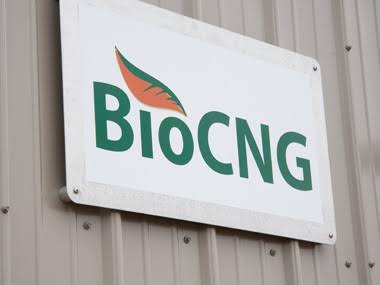BioCNG is a well-known and proven source of clean energy, and is witnessing increasing demand worldwide as it is one of the most cost-effective and eco-friendly replacement for natural gas and diesel. BioCNG is less corrosive than biogas which makes it more flexible in its application than raw biogas. It can be injected directly into the existing natural gas grid leading to energy-efficient and cost-effective transport, besides allowing natural gas grid operators to make a smooth transition to a renewable source of natural gas.
Salient Properties of BioCNG
An innovative aspect of bioCNG is the ability to be converted into both liquid and gaseous forms – liquefied bioCNG (or liquified biomethane) or compressed bioCNG (or compressed biomethane) which helps in long-term storage and transportation. There are many bioCNG ventures where the grid may not have sufficient capacity or may be far away from the bioCNG production facility, and a good solution will be to convert bioCNG directly into a liquid or gaseous fuel for vehicular and industrial applications.
BioCNG can be transported relatively easily and can be dispensed through conventional LNG vehicles or CNG vehicles. Liquid bioCNG is transported in the same manner as LNG, that is, via insulated tanker trucks designed for transportation of cryogenic liquids. BioCNG can be stored as gas in the form of compressed bioCNG to save space. The gas is stored in steel cylinders such as those typically used for storage of other commercial gases.
Applications of BioCNG
BioCNG has a wide range of applications in the clean energy sector. The major uses of bioCNG include the following:
- Production of heat and/or steam
- Power generation and combined heat and power production(CHP)
- Replacement for natural gas (gas grid injection)
- Replacement for compressed natural gas & diesel (use as transport fuel)
- Replacement for liquid natural gas (use as transport fuel)
Prior to practically all utilization options, the bioCNG has to be dried (usually through application of a cooling/condensation step). Furthermore, elements such as hydrogen sulphide and other harmful trace elements must be removed (usually trough application of an activated carbon filter) to prevent adverse effects on downstream processing equipment (such as compressors, piping, boilers and CHP systems).

BioCNG can be used to generate electricity and heating from within smaller decentralized, or large centrally-located combined heat and power plants. It can be used by heating systems with a highly efficient fuel value, and employed as a regenerative power source in gas-powered vehicles.
BioCNG as a Transportation Fuel
BioCNG as a transportation fuel, is most suitable for vehicles having engines that are based on natural gas (CNG or LNG). Once biogas is cleaned and upgraded to bioCNG, it is virtually the same as natural gas. Because bioCNG has a lower energy density than natural, due to the high CO2 content, in some circumstances, changes to natural gas-based vehicle’s fuel injection system are required to use the bioCNG effectively.
Germany is a pioneer in the use of bioCNG in its public transportation system on a large-scale and has more than 900 CNG filling stations, with a fleet of around 100,000 gas-powered vehicles including cars, buses and trucks.
Salman Zafar is an acclaimed blogger, editor, publisher and digital marketer. He is the founder of Blogging Hub, a digital publishing portal with wide following across the world.


4 thoughts on “BioCNG – The Clean Fuel for a Greener World”